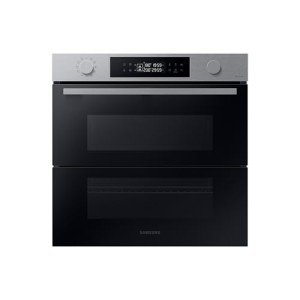The Rise of Built-In Ovens: A Seamless Approach to Modern Cooking
In contemporary kitchen areas, where style looks blend seamlessly with performance, one device stands apart as a real game changer: the built-in oven. As homeowners and chefs alike continue to look for ingenious options that boost their cooking experience, built-in ovens have actually become significantly popular. This post explores the advantages, factors to consider, and trends surrounding built-in ovens, highlighting why they are an important function in modern cooking areas.
What is a Built-In Oven?
A built-in oven is a kitchen area home appliance created to be integrated into the cabinets of a kitchen instead of standing alone. Unlike traditional freestanding ovens, which can be moved and positioned anywhere, built-in ovens come in different styles and sizes to fit specifically within designated spaces. Offered in single or double setups, these ovens use a structured appearance that matches modern-day kitchen area designs.
Advantages of Built-In Ovens
1. Space-Saving Design
Among the most appealing benefits of built-in ovens is their space-saving style. By integrating the oven into cabinets, you can free up valuable counter and floor space. This is especially beneficial in smaller cooking areas, where optimizing room is essential. Built-in ovens can be set up at eye level, making them more accessible and decreasing the requirement to bend down.
2. Visual Appeal
Built-in ovens add to a sleek and cohesive kitchen area style. Available in various finishes-- such as stainless-steel, black, white, and custom-made cabinetry-- they can mix perfectly into the overall decor. This aesthetic appeal enhances the kitchen's visual harmony and raises the space, producing a contemporary and sophisticated atmosphere.
3. Improved Functionality
Many built-in ovens come equipped with advanced cooking technologies, such as convection cooking, steam ovens, and smart features. These enhancements permit flexible cooking alternatives, making it much easier to accomplish professional-level outcomes at home. see this site built-in ovens can even connect to Wi-Fi, enabling users to manage the oven from another location, get notifications, and gain access to a range of cooking programs and recipes.

4. Improved Ventilation
Since built-in ovens can be integrated with kitchen area hoods and ventilation systems, they can assist keep much better air quality and minimize cooking smells. This is specifically considerable for those who love to prepare with aromatic spices and components, as an effective ventilation system can keep the cooking area comfy and inviting.
5. Modification Options
Built-in ovens provide a wide variety of modification options to match individual cooking designs and needs. From professional-grade devices with several cooking modes to compact designs for smaller kitchen areas, property owners can choose the oven that fits their particular requirements. Lots of makers also use adjustable front panels, allowing you to match the oven's appearance to your cabinetry for a genuinely unified look.
Considerations When Choosing a Built-In Oven
While built-in ovens have many benefits, there are necessary factors to consider to bear in mind before making a purchase:
1. Cost
Built-in ovens normally come with a higher cost than their freestanding equivalents due to their design and installation requirements. It's important to aspect in both the expense of the oven and any additional costs associated with cabinets adjustments or installation.
2. see this site
Installing a built-in oven frequently needs professional assistance, especially if you require to modify existing cabinets. Ensure that you consider any costs associated with installation, consisting of labor and potential kitchen cabinetry changes.
3. Size and Dimensions
Before buying a built-in oven, measure the designated area properly to ensure a correct fit. Built-in ovens been available in different sizes and setups, so choosing one that lines up with your requirements and kitchen area style is vital.
4. Lifestyle and Usage
Consider your cooking practices and needs when picking a built-in oven. If you regularly host big gatherings, a double oven might be more useful. On the other hand, if you have a compact kitchen area, a single-wall oven may be sufficient.
Trends in Built-In Ovens
The kitchen area home appliance market is constantly evolving, and built-in ovens are not exempt from emerging patterns. Some present trends include:
Smart Technology Integration: With the increase of clever home technology, built-in ovens now frequently include connectivity choices. This allows users to keep track of cooking progress and adjust settings via mobile apps.
Energy Efficiency: As sustainability becomes a top priority, numerous makers are buying energy-efficient built-in ovens that minimize energy usage while keeping efficiency.
Multi-functional Designs: Built-in ovens now provide functions such as air frying, sluggish cooking, and steaming, offering flexibility that satisfies a vast array of cooking approaches.
Conclusion
Built-in ovens certainly represent a perfect mix of design, function, and convenience in today's cooking areas. As more house owners select this modern-day service, the focus moves to producing a cooking space that is as visually pleasing as it is practical. Whether you are constructing a new home or renovating your kitchen, thinking about a built-in oven could raise your cooking experience and change your cooking area into a trendy and practical haven. With an array of choices readily available and continuous innovations in innovation, built-in ovens stay a standout option for both newbie cooks and cooking lovers alike.
